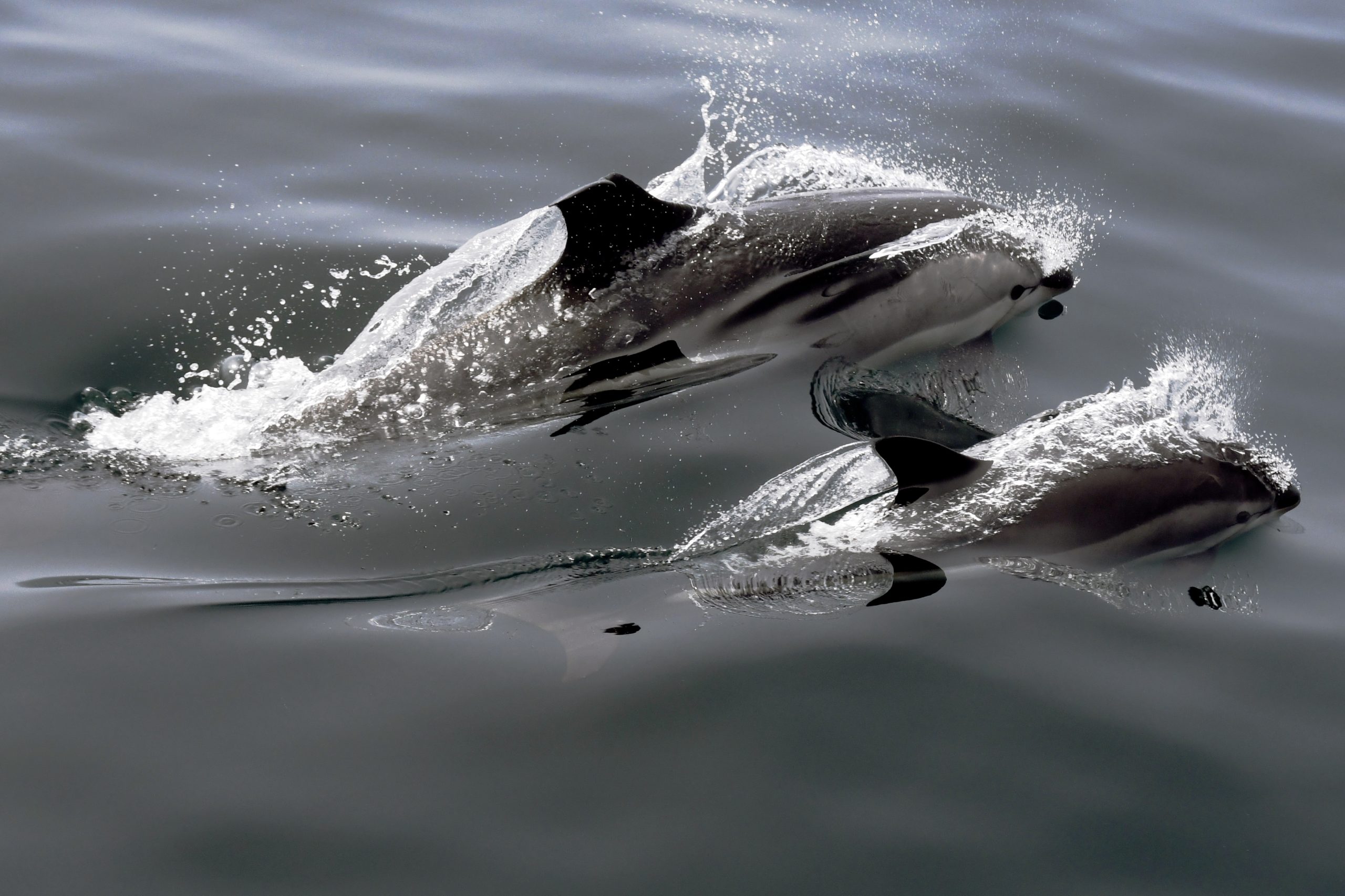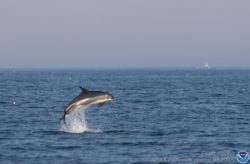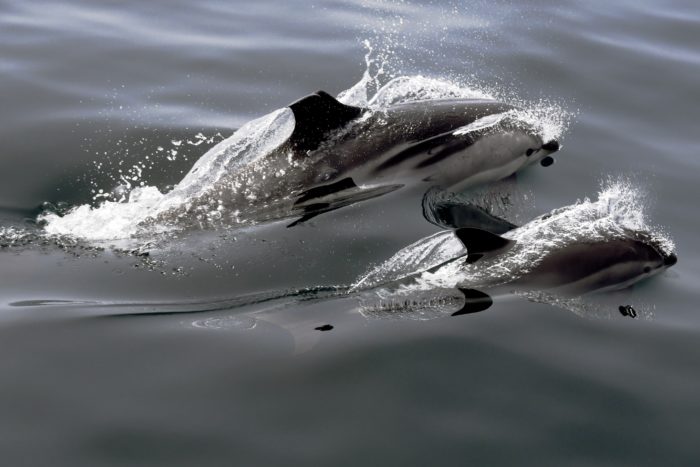
Sea Wonder: Atlantic White-sided Dolphin

Atlantic White Sided Dolphin leaping in Stellwagen Bank National Marine Sanctuary. Photo: Elliott Hazen, NOAA Fisheries permit #14245
The Atlantic white-sided dolphin is one of more than 90 species of whales, dolphins, and porpoises call the ocean home.
Appearance
As its name suggest, the Atlantic white-sided dolphin (Lagenorhynchus acutus) is named for the prominent white stripes on its sides, which span from below the dorsal fin all the way to its tail, where it turns into a yellow or amber color. This species can reach lengths of more than 9 feet when fully grown and weigh as much as 525 pounds. Its back is dark grey in color while the underside is white, and it has a dorsal fin atop the body and one pectoral fin on either side. Their rostrum is fairly short compared to other dolphin species, but within it are cone-shaped teeth used for grabbing their prey. At the end of the peduncle (tail) are two tail flukes, which they move up and down like a paddle to move through the water.
Diet and Habitat
This species lives in colder and temperate waters in the Atlantic Ocean, spanning from the east coast of the United States, Canada, and Greenland to northern Europe. In the United States, we see Atlantic white-sided dolphins from North Carolina to Maine. They are oftentimes seen swimming alongside other species of whales and dolphins in Stellwagen Bank National Marine Sanctuary in the summer. Groups of these dolphins tend to stay in a fairly small home-range throughout the year, which can include both the open ocean and shallower coastal waters depending on the location of their prey and needs of their calves.
Like many other dolphins, this species isn’t picky when it comes to prey. They are known as opportunistic feeders, which means they will consume whatever is easiest for them to catch, including herring, mackerel, cod, and other fish, shrimp, eels, and squid. They are cooperative feeders and will work together to herd and catch their prey, using body language and sounds produced from their blowholes to communicate during a feeding frenzy. As they prepare for winter, Atlantic white-sided dolphins can consume upwards of 30 pounds of fish per day to add to their thick, insulating layer of blubber that allows these warm-blooded animals to keep their body temperature stable.
Life History
During the breeding season (spring and summer), Atlantic white-sided dolphins can gather in groups upwards of 50 individuals, though superpods of hundreds and even thousands of individuals have been observed. For the remainder of the year, males will travel in small groups called bachelor pods while females, calves, and juveniles will travel together in maternal pods. They are quite social animals and are often seen alongside other species of whales and dolphins, including humpback whales, Atlantic bottlenose dolphins, and fin whales. Calves are usually born in the warmer months (April-September) after a year of gestation.
Calves will nurse for about 18 months and will remain with their mothers’ pods until they are between 3 and 5 years old on average. They reach sexual maturity between 6 and 12 years old, with females generally maturing first, and the maximum lifespan is estimated to be between 20 and 30 years old.
Like other species of dolphins, Atlantic white-sided dolphins are highly communicative, using echolocation (sonar) to navigate the ocean, and both vocalizations and body language to transmit information to their conspecifics. Body language can include tail slapping, swimming in unison with other members of the pod, jumping in unison, and breaching, a behavior that involves the dolphin launching its body out of the water and turning so it lands on its side, producing a huge splash and a loud smacking sound.
Threats and Conservation
Atlantic white-sided dolphins are generally not considered threatened or endangered. However, accidental bycatch in fishing gear, chemical and physical pollution, boat strikes, and overfishing are threats to the species’ population health. They are protected in the United States by the Marine Mammal Protection Act of 1972.

